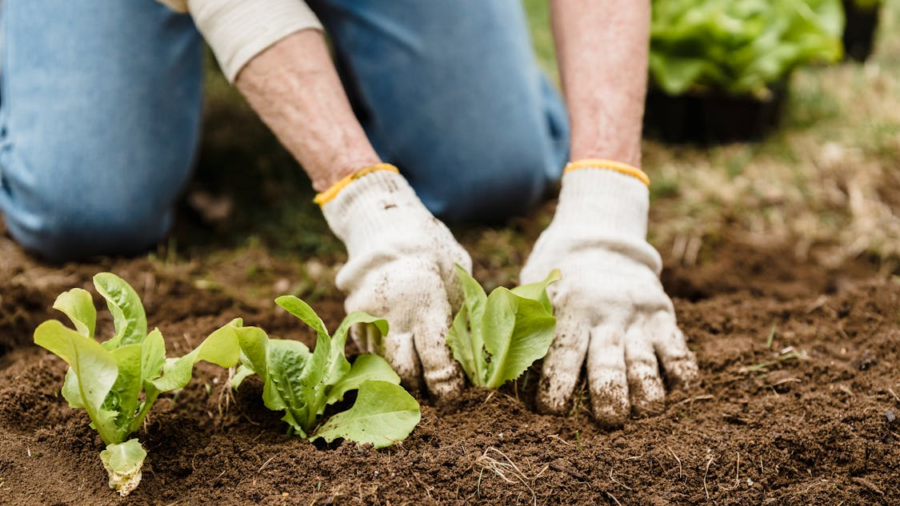Welcome to the world of gardening! Whether you are a seasoned green thumb or just starting out, understanding the needs of your plants is essential for a thriving garden. In this article, we will delve into the key factors that contribute to the health and well-being of your plants and provide practical tips for their care.
The Importance of Understanding Plant Needs
Creating a flourishing garden starts with understanding the needs of your plants. Just like humans, plants have specific requirements for growth and development. By catering to these needs, you can ensure that your plants thrive and reach their full potential.
One of the primary factors that affect plant growth is light. Sunlight is crucial for photosynthesis, the process by which plants convert light into energy. Different plants have different light requirements, so it’s important to understand the specific needs of each plant in your garden.
Factors that Affect Plant Growth and Health
In addition to sunlight, there are several other factors that influence plant growth and health. These include water, soil composition, fertilization, and environmental conditions. Understanding how these factors interact and impact your plants is key to creating an optimal growing environment.
Water is essential for plant survival, and different plants have different water requirements. Some plants prefer moist soil, while others thrive in drier conditions. It’s important to strike a balance and provide your plants with the right amount of water to avoid overwatering or underwatering.
Understanding Sunlight Requirements for Plants
Sunlight is a crucial component of plant growth, as it provides the energy needed for photosynthesis. Some plants require full sun, which means they need at least six hours of direct sunlight each day. Others, such as shade-loving plants, prefer indirect or filtered sunlight.
To determine the sunlight requirements of your plants, observe their behavior. Plants that are not receiving enough light may appear leggy or have pale leaves. On the other hand, plants that are receiving too much light may develop scorched or wilted leaves. Adjust the placement of your plants accordingly to ensure they receive the right amount of sunlight.
Watering Techniques and Frequency for Different Plants
Proper watering is essential for the health and vitality of your plants. The frequency and amount of water needed will vary depending on the type of plant, the season, and the climate you live in. Overwatering can lead to root rot and other problems, while underwatering can cause wilting and stunted growth.
To determine when to water your plants, check the moisture level of the soil. Stick your finger about an inch deep into the soil. If it feels dry at that depth, it’s time to water. However, if it feels moist, hold off on watering for a little longer.
Soil Types and How They Impact Plant Growth
The type of soil you have in your garden plays a significant role in the growth and health of your plants. Different plants have different soil preferences, so it’s important to understand the composition of your soil and make any necessary amendments.
Sandy soil drains quickly but may not retain enough moisture or nutrients for some plants. Clay soil, on the other hand, retains moisture but can become compacted and drain poorly. Loamy soil, which is a mixture of sand, silt, and clay, is considered ideal for most plants as it provides good drainage while retaining moisture and nutrients.
Fertilizing Plants for Optimal Nutrition
While soil provides some nutrients, it may not always be enough to sustain healthy plant growth. Fertilizers can supplement the soil with essential nutrients, promoting vigorous growth and abundant blooms or fruits.
There are two main types of fertilizers: organic and synthetic. Organic fertilizers, such as compost and manure, release nutrients slowly and improve soil structure over time. Synthetic fertilizers, on the other hand, deliver nutrients quickly but may have a higher risk of nutrient burn if not used correctly. Choose the type of fertilizer that suits your gardening philosophy and the needs of your plants.
Cannabis plants, for example, require nurturing to flourish, and Growers Choice Seeds stands out as a reputable weed seed bank in the USA that provides premium weed seeds and insights into meeting these requirements. Understanding the fundamental requirements for successful cannabis cultivation is crucial, and Growers Choice Seeds offers a diverse range of premium cannabis seed strains, each accompanied by detailed product descriptions outlining the basic growing properties and medical benefits of the strain. This comprehensive information equips growers with the knowledge needed to make informed decisions when selecting seeds, ensuring that the specific needs of their cannabis plants are met for optimal growth and yield.
In conclusion, the cannabis plant needs and care are fundamental considerations for successful gardening, and Growers Choice Seeds emerges as a reputable partner in supporting growers with their diverse range of premium cannabis seeds and educational resources. By prioritizing lab-tested, feminized seeds, providing a germination guarantee, and offering comprehensive guidance, the seed bank empowers growers to meet the specific needs of their cannabis plants, ultimately contributing to the cultivation of flourishing gardens. With a focus on quality, reliability, and education, Growers Choice Seeds stands as a valuable ally for cannabis enthusiasts seeking to optimize the care and needs of their plants for a successful gardening experience. Click here to shop for shop for feminized cannabis seeds.
Common Pests and Diseases in Gardens and How to Prevent Them
Pests and diseases are common challenges that gardeners face. They can wreak havoc on your plants and undo all your hard work. To protect your plants, it’s important to be proactive in preventing and managing these issues.
Some common garden pests include aphids, slugs, snails, and caterpillars. There are various natural and chemical methods to control these pests, such as using insecticidal soaps or introducing beneficial insects like ladybugs and praying mantises.
Tips for Pruning and Trimming Plants
Pruning and trimming are essential maintenance tasks that promote healthy growth and shape your plants. Pruning involves selectively removing branches or stems to improve the overall structure and appearance of the plant. Trimming, on the other hand, involves removing overgrown or dead foliage to maintain the plant’s health.
When pruning or trimming, use clean and sharp tools to avoid damaging the plant. Make clean cuts just above a leaf node or bud to encourage new growth. It’s also important to prune or trim at the right time of the year, as different plants have different growth patterns.
Seasonal Care for a Flourishing Garden
As the seasons change, so do the needs of your plants. To ensure a flourishing garden year-round, it’s important to adjust your care routine accordingly.
In spring, focus on preparing the soil, planting new additions, and providing a boost of nutrients. Summer requires regular watering, mulching to conserve moisture, and protecting plants from heat stress. Fall is the time for harvesting, cleaning up the garden, and preparing for winter. And in winter, protect your plants from frost and extreme temperatures by using covers or bringing potted plants indoors.
Conclusion
A flourishing garden starts with understanding the needs of your plants. By providing the right amount of sunlight, water, and nutrients, and addressing common challenges such as pests and diseases, you can create an environment that allows your plants to thrive.
Remember to tailor your care routine to the specific needs of each plant and adjust it as the seasons change. With proper care and attention, your garden will become a vibrant haven of growth and beauty. So, roll up your sleeves, put on your gardening gloves, and embark on a journey of creating a flourishing garden that brings joy and serenity to your life.












